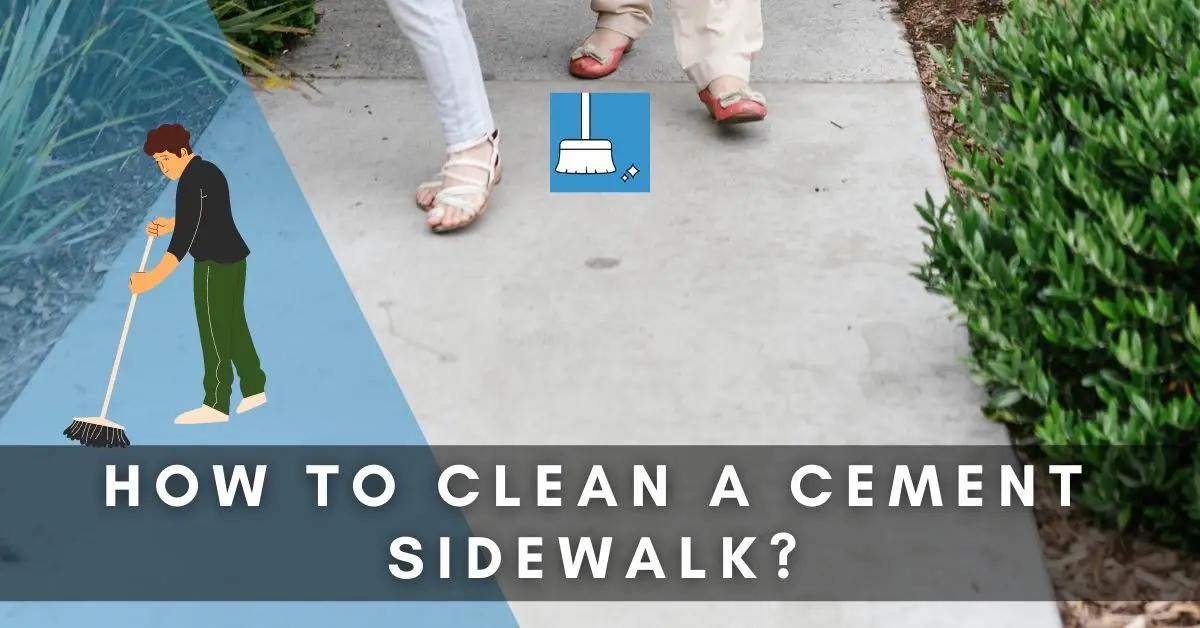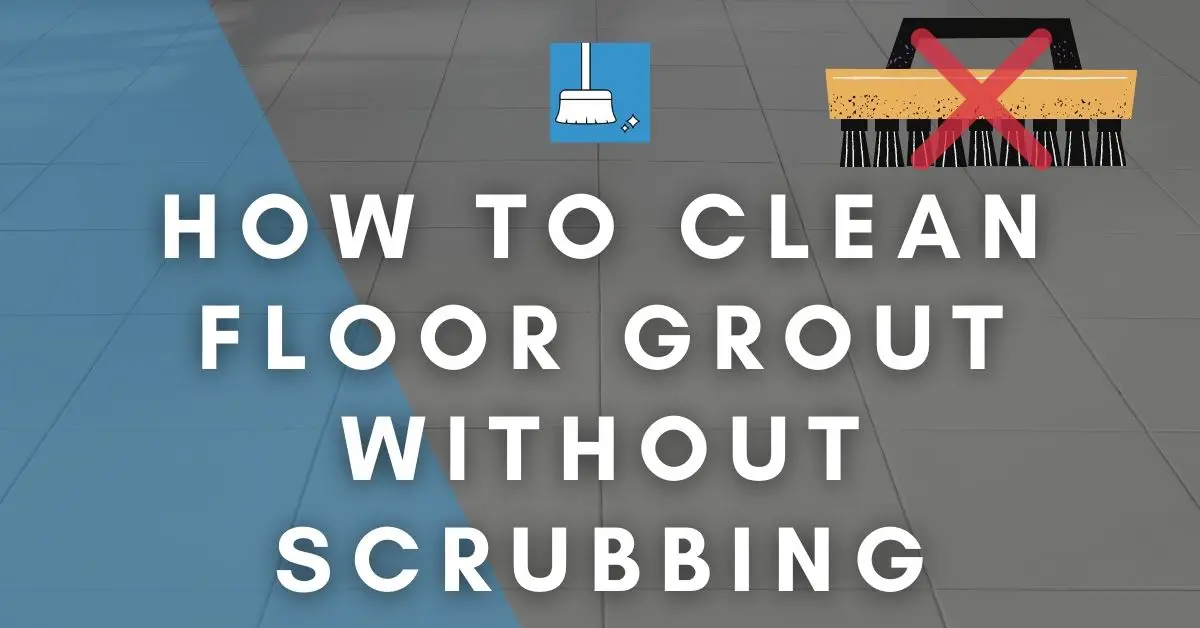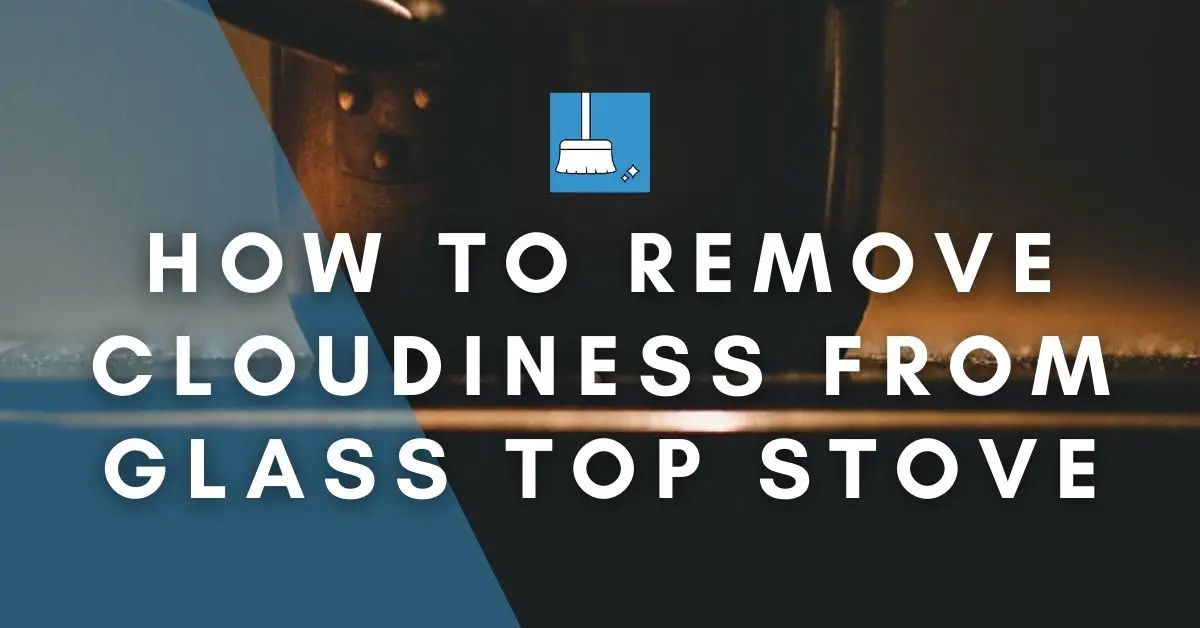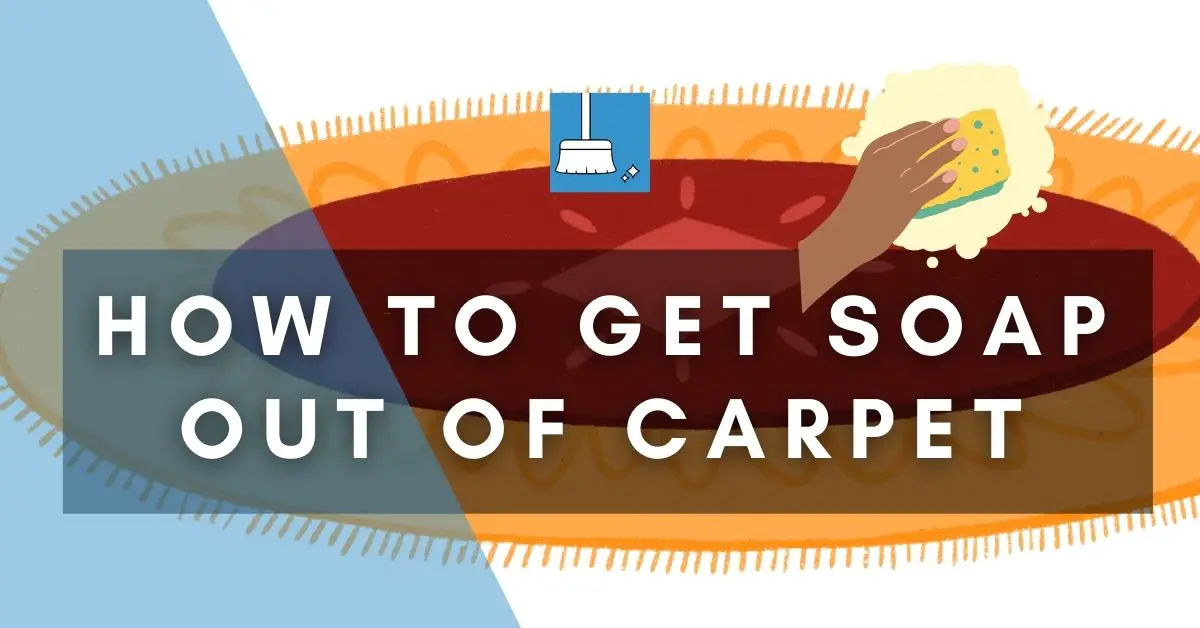Cement is porous in nature and sidewalks will often get dirt ingrained in it. Weather can discolor the sidewalks made of cement or concrete and metals coming in contact with cement can leave rust stains over them.
Surface dirt, ingrained dirt, mold and mildew stains, grease stains, rust stains, and other stains that make your cement sidewalk look ugly can be cleaned.
In this article, we’ll look at the cleaning methods for all these types of problems and also important things to take note of when cleaning cement sidewalks.
How to Clean a Cement Sidewalk?
Use these simple step-by-step methods to clean your cement/concrete sidewalks.
Method 1: For Regular Cleaning of Cement Sidewalk
If it’s just simple dirt, soot, and debris that you need to tackle on the cement sidewalk, this method will do just fine. But for more pronounced stains and thorough cleaning, you’ll need to use other methods.
Preparation for Cleaning
1- As a preparation for the cleaning of the cement sidewalk, carefully inspect the surface for cracks. Weeds can grow out from these cracks making the sidewalk look ugly. You need to remove these weeds that have made their way out of these cracks.
2- After cleaning, rinse the nearby grass and plants with running water as chemicals might have touched them.
YOU’LL NEED
1- Warm water
2- Deck scrubber/Heavy-duty plastic brush
3- Laundry detergent/Driveway cleaner
4- Bucket full of water
5- Scrub brush
Note: Do not use a metal bristled brush as it will leave metal behind in the grain of your sidewalk. When this metal will come in contact with water and air, it will leave rust marks.
STEPS
STEP 1: Use your heavy-duty plastic brush (with a long handle) to loosen and wipe away the dirt and debris.
STEP 2: Pour warm water on the cement sidewalk.
STEP 3: Make a solution of 2 cups of laundry detergent in a bucket of water. Use this solution on ingrained dirt and stains on the cement sidewalk and scrub in circular motions with a scrub brush. This might involve bending down.
Alternatively you can use a concrete cleaner or a driveway cleaner instead of Detergent and dilute it with water as per the label instructions.
If still there are stains left behind: 1- Put 1 cup Baking soda in a bucket. 2- Slowly add 2 cups of Vinegar in a gallon of water to make a thick consistency. 3- Dip a scrub brush in this solution and scrub in circular motions. 4- Finally, rinse the area with running water.
Method 2: Cleaning Grease from Cement Sidewalk
A. For FRESH Oil spills
YOU’LL NEED
1- Sawdust / Cornmeal
2- Broom / Soft brush
3- Stiff nylon brush
4- Powdered detergent
5- Water
6- Garden hose
7- Degreaser (Optional)
STEPS
STEP 1: Spread sawdust or cornmeal onto the oil spill to let it soak up the oil. Leave the area for a few hours or overnight.
STEP 2: Using a broom/brush, brush away the sawdust/cornmeal onto a dust pad.
STEP 3: Use powdered detergent on the stain by directly sprinkling it over the stain. Dip a stiff brush (nylon) in water and use it to scrub the area in circular motions.
STEP 4: Rinse away the area with clean water using a hose and let it dry.
STEP 5: If the stain still remains, use a degreaser to remove the stain.
B. For Gentle OLD Grease Stains
YOU’LL NEED
1- Water
2- Degreaser
3- Scrub brush
4- Garden hose
STEPS
STEP 1: Mix water with a degreaser (such as “oil eater”) and spray/apply it directly onto the greasy cement surface. The dilution ratio should be according to the label’s instructions. Usually, for heavy-duty jobs, it is 1:1
STEP 2: Gently scrub the surface using a wet scrub brush.
STEP 3: Using a garden hose, rinse the cement sidewalk with water.
C. For Tough OLD Grease Stains
YOU’LL NEED
1- Water
2- Degreaser
3- Scrub brush
4- Pressure washer
STEPS
STEP 1: Apply some degreasing solution to the greasy cement surface. Dilute according to the manufacturer’s instructions.
STEP 2: Gently scrub the surface using a wet scrub brush.
STEP 3: Fire up your Pressure washer (Yellow 15-degree nozzle) and wash the cement sidewalk.
However, if you are unsure about the spray nozzle or you are a beginner with pressure washers, use a gentler spray nozzle to test it on the cement surface and then move your way up to higher pressure ones.
Method 3: For Cleaning Mold & Mildew off Cement Sidewalk
The ugly green and dark mildew & mold on sidewalks and driveways can be a hazard to the health and lifestyles of the people around.
Simply cleaning the sidewalk with water and dish soap is will not kill mold. You will need stronger materials.
Option A: If Mold is Very Little
YOU’LL NEED
1- Powdered detergent
2- Boiled water
3- Hard brush
4- Garden hose
STEPS
STEP 1: Wet the cement surface and sprinkle powdered detergent over it and let it stay for 5 minutes.
STEP 2: Boil 2 liters of water and pour half of it over the mold stains. There will be soapy foam formed over the surface.
STEP 3: Scrub the surface using a hard brush (non-metallic) in circular motions.
STEP 4: Pour more boiling water on the stains and scrub again until they are completely gone.
STEP 5: Finally, rinse with running water with a garden hose.
Option B: For More Pronounced Mold & Mildew
The heat combined with high-pressure water will do the trick. You will need a pressure/power washer of 1000 to 2,000 psi.
Although water coming out of the pressure washer can do the job most times, power washers can better kill bacteria.
Tip: Clean away the mildew as soon as you notice it to prevent permanent stains.
YOU’LL NEED
1- Long handle plastic brush
2- Pressure washer/Power washer
3- Water
4- Garden hose
5- Mold remover
STEPS
STEP 1: Wipe away the surface dust and debris from the cement sidewalk.
Note: Avoid sweeping the moldy area as it will spread the mold in the air leading you to inhale that air.
STEP 2: Connect your pressure/power washer with a garden hose. Pour a solution of water and Mold & Mildew Remover in the pressure washer detergent tank.
Warning: Do not use bleach with your pressure/power washer as it eats away the pump's seal
STEP 3: Turn on the power washer and direct its pressure at the cement sidewalk. In back-and-forth motions, gradually keep washing the sidewalk. You may have to turn up the heat if you’re using a power washer.
Tip: If you’re a beginner at using pressure washers, start with the wide spray tip (Such as White 40-degree) and gradually make your way upto the direct angle tips.
STEP 4: Now you will need to switch to a different nozzle of your pressure washer to wash with just water (with a wider scope). Wash the sidewalk to rinse away the mildew remover.
Option C: For Cleaning Mold & Mildew (Using Bleach)
This method is more time consuming and also needs more effort. It is for you if you don’t have a pressure washer or don’t want to use one.
We will be using common household cleaning agents (Bleach or Vinegar) that can kill mold and mildew.
Warning: Bleach can burn and kill the plants and shrubbery of your lawn. Cover the surrounding greenery with pastic sheets.
YOU’LL NEED
1- Chlorine bleach
2- Water
3- Bucket
4- Stiff-bristled brush
5- Garden hose
6- Gloves & Face mask
STEPS
STEP 1: After wearing your protective gear, pour 2 cups of bleach in a gallon of water. Pour the solution on the moldy areas of your cement sidewalk and let it stay for 5 minutes. If the stains are dense, then let it sit for 20 minutes.
STEP 2: Using a stiff-bristled brush and dipping it into the retained solution, scrub the moldy surface.
STEP 3: Rinse with water using a garden hose.
Method 4: Removing Rust Stains
In a few places, the soil is red due to its high iron content. Also, using metal brushes to clean cement surfaces can lead to rust stains.
Remember to clean Rust stains before handling mold and mildew.
This method uses Oxalic Acid which can be purchased from paint/hardware stores.
Warning: Never apply Chlorine bleach to rusty areas of cement sidewalks. It will cause worse discoloration.
YOU’LL NEED
1- Broom / Long handle brush
2- Oxalic acid
3- Water
4- Nylon-bristled scrub brush
5- Garden hose /Bucket of water
STEPS
STEP 1: Using your broom/brush, sweep the sidewalk (or the rusty area) and get rid of surface dust and debris.
STEP 2: Make a solution of Oxalic acid (4 ounces) and water (A quart).
STEP 3: Apply this solution to the rusty area of the cement sidewalk and scrub with a stiff nylon brush.
STEP 4: Now allow the solution to sit for 2 hours.
STEP 5: Using a garden hose or pouring water directly (if the area is small), clean the oxalic acid sidewalk off the sidewalk and again scrub with a stiff brush.
If the rust stains still prevail, apply the treatment again.
Cement Sidewalk Cleaning – Remember These!
1- Never use Metal brushed on cement surfaces as these can leave residue behind which later takes the form of rust.
2- Deeply clean your cement sidewalk at least once every six months to avoid mold and mildew buildup.
3- When using any chemical for cleaning, test it on a corner first. Let it dry and see if it damages the surface or leaves stains. If it does, DO NOT continue to use it.
4- Clean your cement sidewalks in sunny warm weather to let them dry naturally and swiftly.
5- When using chemicals or pressure washers, cover the plants and nearby grass with plastic as chemicals and high-pressure water can damage these.
6- Avoid using Muriatic acid on cement as it eats away the binder in cement leading it to weaken.
Conclusion
We have looked at various methods to regularly clean your cement sidewalks and also to clean most kinds of stains (oil & grease, mold & mildew, rust stains).
The methods are safe. Make sure to follow the warnings and special notes as well. Also, read the manufacturer’s instructions on the products that you use on your cement surfaces.
Just like cement sidewalks, you might be interested in cleaning Cement curbing, Cement patio, and also cleaning Cement steps (stairs).






Pingback: Can A Shop Vac Get Rained On? (4 Factors!) + What To Do? »